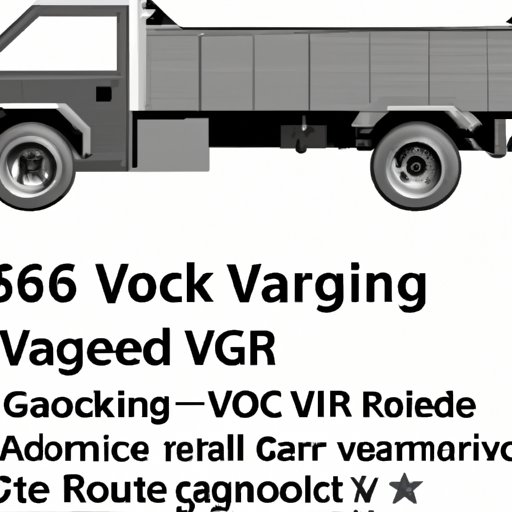
Introduction
When it comes to operating a vehicle, understanding your vehicle’s Gross Vehicle Weight Rating (GVWR) is essential for road safety and compliance. In this article, we’ll explore GVWR, what it is, how it affects your vehicle, and its importance in commercial transportation and vehicle design and engineering.
Understanding Gross Vehicle Weight Rating: What Every Driver Should Know
The GVWR is the maximum weight limit of a vehicle as specified by the manufacturer. It includes the weight of the vehicle, payload capacity, passengers, fuel, and any other items that may be inside the vehicle. Exceeding the GVWR can lead to several safety hazards, fines, damage to the vehicle, and even accidents.
How to Calculate Gross Vehicle Weight Rating and Keep Your Vehicle Safe
To calculate the GVWR of your vehicle, you need to locate the plate or sticker on your vehicle that indicates its weight limit. You can also check your owner’s manual or consult the manufacturer’s website for your vehicle’s GVWR. It is essential to follow the manufacturer’s guidelines and avoid exceeding the GVWR. Reducing the weight of the vehicle and distributing it evenly can help you stay under the GVWR.

The Importance of Gross Vehicle Weight Rating in Commercial Transportation
In commercial transportation, GVWR is critical, and regulations govern it. Staying within the GVWR is essential for compliance and ensuring safety on the roads. Adhering to GVWR guidelines can improve vehicle performance and longevity and promote better fuel efficiency.
Maximizing Your Vehicle’s Potential: Tips for Staying Under Gross Vehicle Weight Rating
To stay under the GVWR, you can reduce the weight of the vehicle. Consider removing unnecessary items from the car, use lighter materials and distribute the weight evenly. Doing so can improve fuel efficiency, enhance vehicle performance and decrease the risk of potential accidents.
Going Beyond the Basics: Exploring Gross Vehicle Weight Rating and Payload Capacity
Payload is where occupants ride, and it consists of everything that sits on top of the chassis. It includes the engine, seats and other passengers, and everything else, including equipment, luggage and more. The payload capacity of the vehicle plays a crucial role in determining the total GVWR.
The Role of Gross Vehicle Weight Rating in Vehicle Design and Engineering
When designing vehicles, manufacturers design them with the GVWR in mind. Engineers take into account all aspects of durability, safety, and performance, including the various weight limits. Manufacturers use many technological advancements to measure and manage GVWR for optimal performance and safety for the driver and passengers.
From Towing Capacity to Payload Specs: Dissecting Gross Vehicle Weight Rating for the Average Driver
To properly understand GVWR, it is essential to know and differentiate between gross axle weight rating (GAWR), towing capacity, and payload specs. It is also crucial to manage the weight for different types of vehicles, such as SUVs and trucks, and avoid common mistakes and misconceptions that can lead to accidents and violations.
Conclusion
The Gross Vehicle Weight Rating (GVWR) is essential to understand for all drivers. GVWR guidelines keep drivers safe, reduce the risk of accidents and make roads safer. Compliance with GVWR can lead to optimal vehicle performance and longevity, improve fuel efficiency and lower the risk of getting ticketed or fined. Follow the tips and guidelines mentioned in this article to keep your vehicle safe, stay on the right side of the law, and save money in the long run.




